
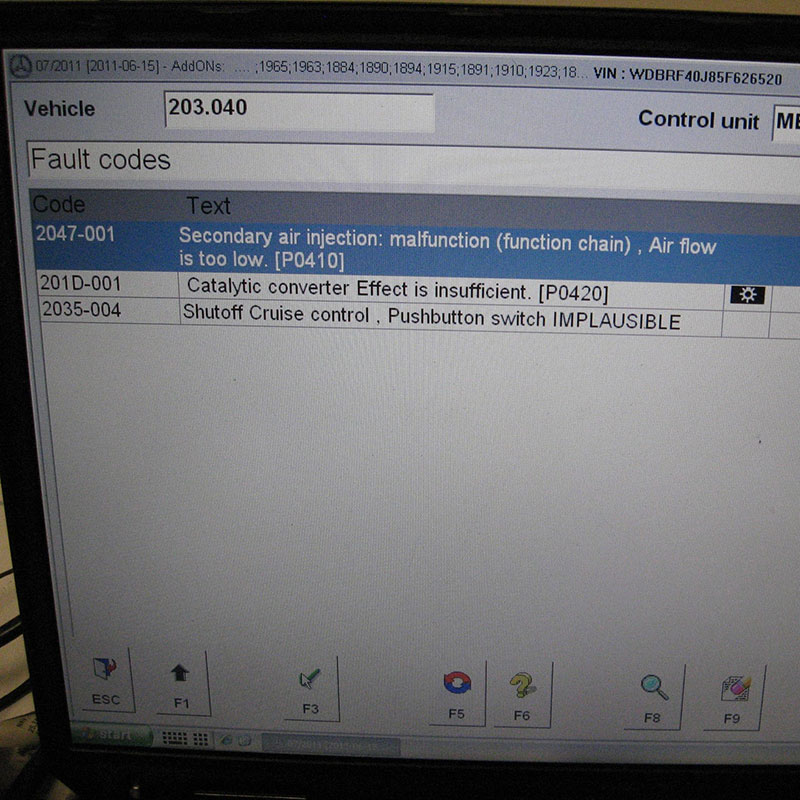
The Mercedes Benz Code P0410 is a common issue, particularly those manufactured between the late 1990s and 2020. This diagnostic trouble code (DTC) signifies a malfunction in the secondary air injection system, which is critical for emissions control during cold starts. In this comprehensive guide, we will help you diagnose and fix Mercedes code P0410 efficiently.
Table of Contents
ToggleThe P0410 code appears when the Engine Control Module (ECM) detects a fault in the secondary air injection system.
The secondary air injection system plays a crucial role in emissions control by:
Promoting Exhaust Gas Oxidation: The system injects fresh air into the exhaust stream. This introduces additional oxygen, which helps to burn off any uncombusted fuel present in the exhaust gases. This process significantly reduces the output of hydrocarbons (HC) and carbon monoxide (CO), both of which are detrimental to air quality [Source: United States Environmental Protection Agency (EPA)].
Accelerating Catalytic Converter Warm-Up: Catalytic converters, the unsung heroes of emissions control, operate most efficiently at high temperatures. By pumping air into the exhaust, the secondary air injection system facilitates a faster heating of the catalytic converter. Reaching its optimal operating temperature quickly allows the converter to effectively neutralize pollutants like nitrogen oxides (NOx) in addition to HC and CO [Source: California Air Resources Board (CARB)].
Enhancing Emissions Compliance During Warm-Up: During the engine’s warm-up phase, combustion is often less efficient, leading to higher levels of emissions. The secondary air injection system provides an extra layer of emissions control during this period, ensuring your Mercedes-Benz meets stringent environmental standards.
The secondary air system typically operates for about 40 seconds after a cold start when the coolant temperature is below 35°C. When the system functions correctly, the ECM should detect increased oxygen levels in the exhaust through O2 sensors.
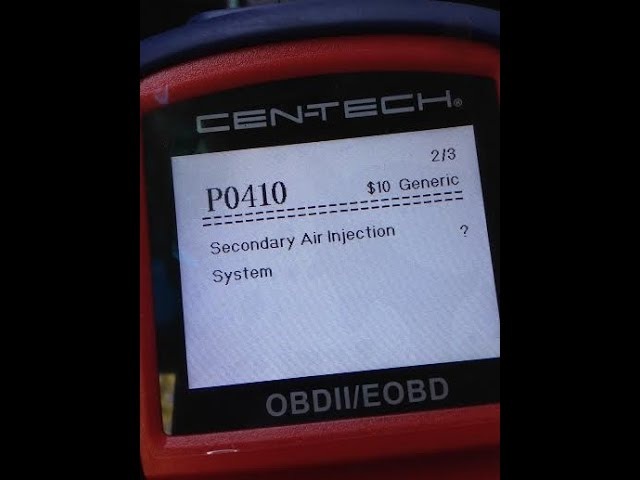
Identifying the symptoms associated with the Mercedes Benz P0410 code is the first crucial step in addressing the underlying issue. Being aware of these signs will allow for timely diagnosis and prevent potential further complications. Here are the common indicators you might encounter:
2.1. Illumination of the Check Engine Light (CEL):
This is often the most immediate and noticeable symptom. The CEL on your dashboard serves as a general alert, indicating that the vehicle’s onboard diagnostics system has detected a fault, in this case, related to the secondary air injection system. Don’t ignore this warning; prompt investigation is key.
2.2. Experiencing Rough Idle and Starting Difficulties:
A malfunctioning secondary air injection system can sometimes contribute to a less stable engine idle. You might notice unusual vibrations or fluctuations in the engine’s RPMs when the vehicle is stationary. Additionally, the engine might take longer than usual to start, characterized by prolonged cranking before ignition.
2.3. Unusual Rattling Noises Emanating from the Engine Bay:
Strange sounds, particularly a rattling or whirring noise originating from the engine compartment, can be a telltale sign of a failing secondary air injection pump. This pump is a mechanical component, and internal damage or wear can lead to these audible indicators.
2.4. Hesitation or Lag During Acceleration:
In some instances, a Mercedes-Benz exhibiting the P0410 code might also display a slight hesitation or lack of responsiveness when you press the accelerator pedal. This can occur if the air-fuel mixture is being affected by the improperly functioning air injection system.
2.5. Indications of an Engine Running Lean or Rich:
If the secondary air injection system is either pumping too much air or failing to pump enough air into the exhaust, it can skew the readings of the oxygen sensors. This can lead the ECM to misinterpret the air-fuel mixture, potentially causing the engine to run either too lean (too much air) or too rich (too much fuel). This can impact overall engine performance and fuel efficiency.
2.6. Intermittent Check Engine Light Activity:
The check engine light might not remain constantly illuminated. In some scenarios, it may turn on and off sporadically. This intermittent behavior can be influenced by factors such as temperature fluctuations or specific driving conditions that temporarily affect the performance of the faulty component.
Understanding the potential culprits behind the symptoms of the P0410 code is essential for effective troubleshooting. Here are the typical underlying causes that lead to a malfunction in the secondary air injection system:
Faulty Secondary Air Injection Pump: The heart of the system, the air pump, is a mechanical device prone to wear and tear over time. Failure of the pump to adequately deliver air into the exhaust manifold is a primary reason for the P0410 code. This failure can stem from motor burnout, internal blockages, or electrical issues within the pump itself.
Blocked or Clogged Air Passages: The secondary air injection system relies on a network of hoses and passages to transport air from the pump to the exhaust ports in the cylinder head. These passages can become obstructed due to carbon buildup or the accumulation of debris over time, hindering the proper flow of air.
Malfunctioning Oxygen (O2) Sensors: While not directly part of the air injection system, faulty O2 sensors can provide inaccurate readings to the ECM. If the sensors incorrectly report insufficient oxygen levels even when the air pump is operating, it can trigger the P0410 code erroneously. Upstream and downstream O2 sensors play different but crucial roles in monitoring exhaust gases [Source: Bosch Automotive Handbook].
Electrical System Issues: The secondary air injection pump relies on electrical power to function. Problems such as a faulty air pump relay (which controls the power supply to the pump) or corroded or damaged electrical wiring and connectors can prevent the pump from operating correctly, leading to the P0410 code.
Blown Fuse: The secondary air injection pump circuit is typically protected by a fuse. A blown fuse will interrupt the power supply to the pump, rendering it inoperable and consequently triggering the diagnostic trouble code. The fuse rating for the secondary air pump circuit is often around 40 amps.
Addressing these potential causes through thorough diagnosis is paramount to effectively resolving the P0410 code and ensuring the long-term health and performance of your Mercedes-Benz engine. Regular vehicle maintenance can play a significant role in preventing some of these issues.
4.1.1. OBD2 Scanner (e.g., Autel MaxiCOM, Launch X431, or iCarsoft MB V3.0)
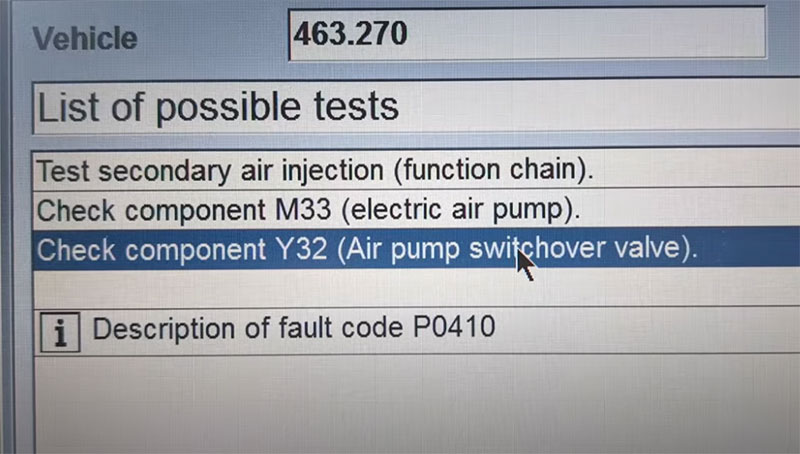
4.1.2. Multimeter (Fluke 117, Klein Tools MM600, or similar)
4.2.1. 12V Power Supply or Battery with Jumper Wires
4.2.2. Basic Hand Tools (Socket Set, Ratchet, Screwdrivers, Pliers)
4.2.3. Vacuum Pump (Handheld or Electric)
4.2.4. Smoke Machine or Leak Detector
4.2.5. Fuse Puller & Spare 40A Fuse
Mercedes-Specific Diagnostic Software (Xentry, Vediamo, DTS Monaco)
5.1. Check the Fuse
Locate the Fuse: The 40-amp fuse for the secondary air injection pump is typically situated in one of the fuse boxes. In many Mercedes-Benz models, this is located on the driver’s side, often near the engine compartment. Refer to your vehicle’s owner’s manual or a wiring diagram for the precise location of this fuse.
Inspect the Fuse: Carefully remove the fuse using a fuse puller. Visually examine it for any signs of a break in the metal filament. Alternatively, use a multimeter set to the continuity setting to check if there is a continuous electrical path through the fuse. A lack of continuity indicates a blown fuse.
Replace if Necessary: If the fuse is blown, replace it with a new fuse of the exact same amperage rating (40 amps). Installing a fuse with a higher rating can potentially damage other components in the electrical circuit. After replacement, take your vehicle for a test drive to see if the P0410 code returns.
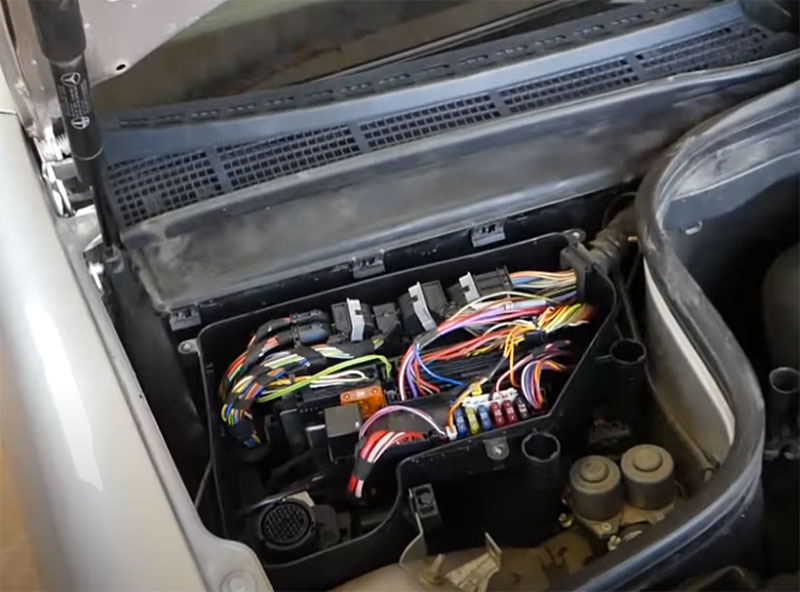
5.2. Test the Secondary Air Pump
Locate the Pump: The secondary air injection pump is commonly found on the left side of the engine compartment, but its exact location can vary depending on your specific Mercedes-Benz model. Consult your vehicle’s service manual for its precise placement.
Disconnect the Electrical Connector: Carefully disconnect the electrical connector that supplies power to the air pump. Ensure the ignition is turned off before doing this.
Apply Direct Power: Using a 12V power supply or a battery with jumper wires, directly apply 12 volts to the terminals of the air pump. Observe if the pump motor starts to run.
Interpret the Results: If the pump does not turn on when direct power is applied, it is likely faulty and will need to be replaced. If the pump does run, the issue might lie in the electrical circuit supplying power to the pump (fuse, relay, or wiring).
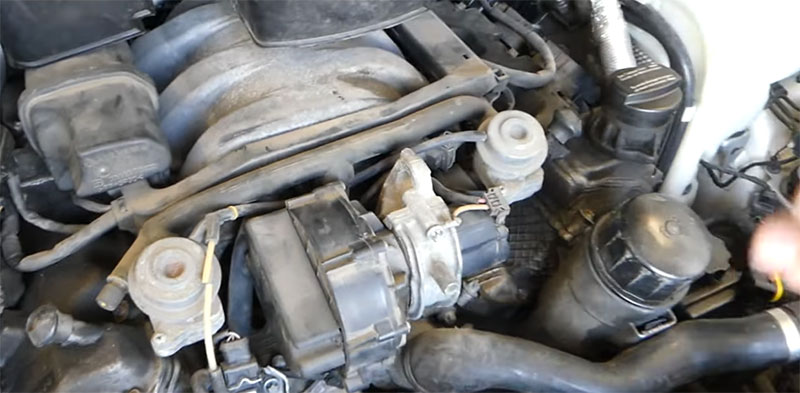
5.3. Check Pump Resistance
Access the Pump Connector: Ensure the electrical connector to the secondary air pump is disconnected.
Set Up Your Multimeter: Set your multimeter to measure resistance (Ohms – Ω).
Measure Resistance: Place the multimeter probes across the two terminals of the air pump motor.
Analyze the Reading: A normally functioning air pump motor typically exhibits a low resistance, usually below 1 ohm. If the resistance reading is significantly higher (e.g., above 20 ohms) or shows an open circuit (infinite resistance), it indicates an internal fault within the pump motor, and replacement is generally required.
5.4. Test the Relay
Locate the Relay: The relay for the secondary air injection pump is often situated near the diagnostic port or within a hidden fuse box. Refer to your vehicle’s wiring diagram or service manual to pinpoint its exact location.
Swap with an Identical Relay (if possible): If your vehicle has another relay with the exact same part number and specifications in a non-critical system, you can try swapping them. If the P0410 issue resolves after the swap, the original relay is likely faulty.
Test with a Multimeter: Alternatively, you can test the relay using a multimeter. You’ll need to identify the relay’s coil terminals and the switch terminals. Apply 12V to the coil terminals and check for continuity across the switch terminals when the coil is energized. If the relay does not switch properly, it needs to be replaced.
5.5. Inspect the Air Pump Switchover Valve
Locate the Valve: The air pump switchover valve (often referred to as the Y32 valve in Mercedes-Benz systems) is typically located in the vicinity of the secondary air pump or the exhaust manifolds.
Use a Scan Tool for Activation: With the engine running (be cautious of moving parts and hot surfaces), use an advanced scan tool (such as Xentry, Launch X431, or Autel) that has the capability to activate vehicle components. Command the scan tool to activate the secondary air injection system or specifically the switchover valve.
Listen for Operation: When the valve is activated, you should be able to hear a distinct clicking sound, indicating that the valve is opening and closing.
Investigate Further if No Sound: If you don’t hear a clicking sound, first inspect the electrical wiring and connections leading to the valve for any damage or corrosion. Use a multimeter to check if the valve is receiving the correct voltage supply when it should be activated. A faulty valve will require replacement.
5.6. Inspect Hoses and Connections
Visual Inspection: Carefully examine all the hoses and connections associated with the secondary air injection system. Look for any visible signs of cracks, leaks, damage, or disconnections. Pay close attention to areas where hoses might rub against other components or where connections might have become loose.
Secure Connections: Ensure that all hose clamps and connectors are properly tightened and secured. Replace any damaged or deteriorated hoses.
Based on the diagnosis, here are the most common remedies for resolving the Mercedes Benz P0410 code:
6.1. Replace the Secondary Air Pump: If your testing indicates that the secondary air pump is faulty (fails to run with direct power or exhibits abnormal resistance), replacement is the necessary course of action.
Identify the Correct Part: Ensure you obtain the correct replacement part number for your specific Mercedes-Benz model and engine. For example, Mercedes part #A0001404285 is often used for M113 engines, but always verify based on your VIN.
Installation: Disconnect the hoses and electrical wiring from the old pump. Remove the faulty pump and install the new one, ensuring all hoses and wiring are securely reconnected.
Clear Codes and Test: After installation, use your OBD2 scanner to clear the P0410 fault code from the ECM and take the vehicle for a test drive to confirm the issue is resolved and the code does not return.
6.2. Replace the Air Pump Switchover Valve: If the switchover valve (Y32) is determined to be malfunctioning (not activating or receiving power), replacing it is the solution.
Obtain the Correct Part: As with the pump, ensure you have the correct replacement valve for your model (e.g., Mercedes part #A0005003201 is common for many models, but verification is crucial).
Installation: Locate the valve, disconnect its electrical wiring and any associated vacuum lines, and remove the old valve. Install the new valve and reconnect the wiring and vacuum lines securely.
6.3. Repair Wiring Issues: If your diagnosis reveals damaged wiring or corroded connectors in the secondary air injection system’s electrical circuit, these issues need to be addressed.
Inspect Thoroughly: Carefully examine the wiring harness leading to the air pump, relay, and switchover valve for any signs of physical damage, such as cuts, breaks, or exposed wires. Check connectors for corrosion or loose pins.
Repair or Replace: Repair any damaged wiring by splicing and insulating the connections properly. Clean corroded connectors or replace them entirely if necessary. Ensure proper continuity between components and the ECM using a multimeter.
6.4. Replace the Relay: If the secondary air pump relay is found to be faulty, installing a new, identical relay will restore proper power supply to the pump.
Identify the Correct Relay: Ensure the replacement relay has the same part number and specifications as the original.
Installation: Simply remove the old relay from its socket and plug in the new one.
Verify Operation: After replacement, start the vehicle and monitor if the secondary air injection system now functions correctly and if the P0410 code remains cleared.
For Mercedes-Benz owners specifically dealing with the P0410 code, here are some additional points to keep in mind:
Common Issue Across Models: The P0410 fault code is a relatively common occurrence in Mercedes-Benz vehicles manufactured between approximately 1997 and 2020, spanning various models and engine types.
Potential for Simple Fixes: Some Mercedes-Benz owners have reported success in resolving intermittent P0410 codes by simply cleaning the air intake pathway leading to the secondary air pump. Obstructions in this intake can sometimes hinder the pump’s performance.
Comprehensive System Check is Key: Even if you successfully replace the secondary air pump, it’s crucial to understand that other faulty components within the system (such as the switchover valve, relay, or hoses) can also cause the P0410 code to reappear. A thorough diagnosis of the entire system is always recommended.
Professional Assistance When Needed: If you are not comfortable performing DIY repairs or if you continue to experience the P0410 code after attempting fixes, it is advisable to seek professional diagnostics and repair services from a qualified automotive technician specializing in Mercedes-Benz vehicles.
The P0410 code in Mercedes-Benz vehicles is typically caused by a malfunction in the secondary air injection system. Common culprits include a failed air pump, faulty switchover valve, electrical issues, or damaged hoses. By following this step-by-step guide, you can accurately diagnose and fix the issue yourself.
If you continue to experience problems, AutoExplain is here to help! We specialize in car diagnostics, coding, and programming support for Mercedes-Benz vehicles. Contact us via WhatsApp at +1(936)2896695 for professional assistance

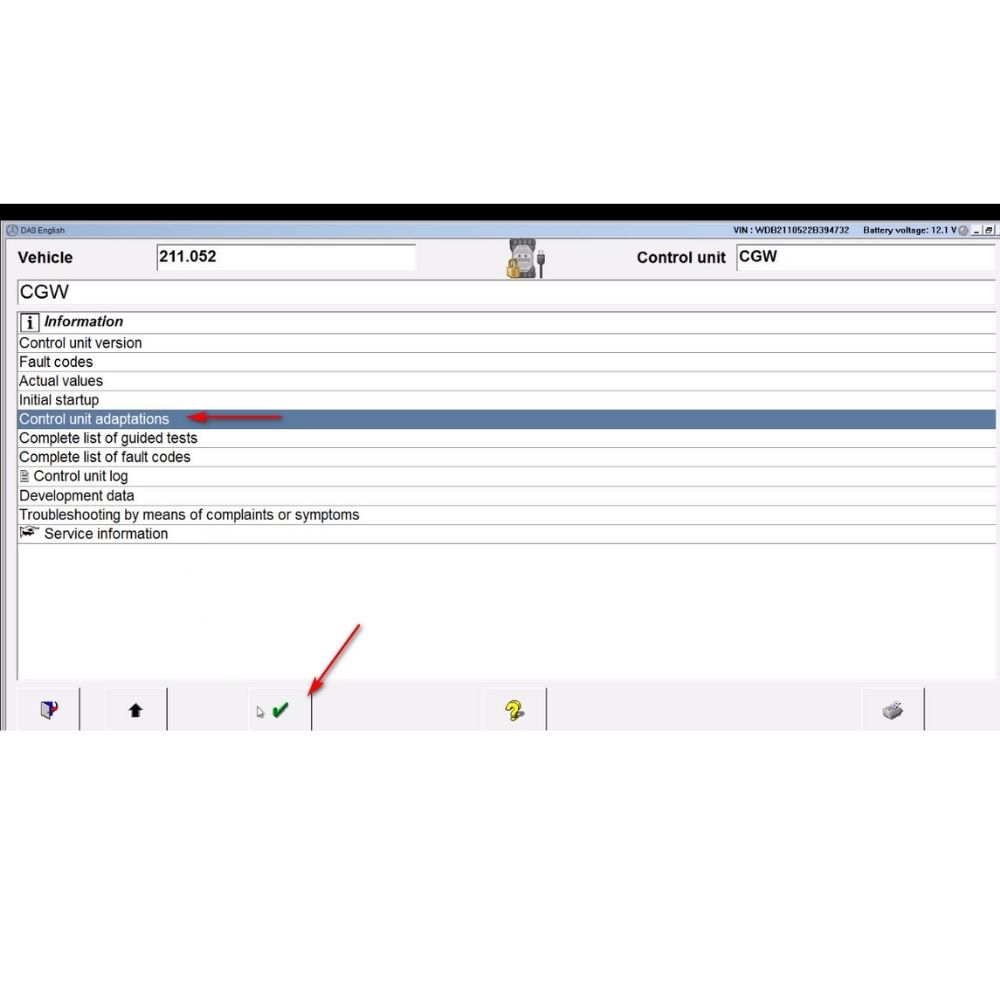
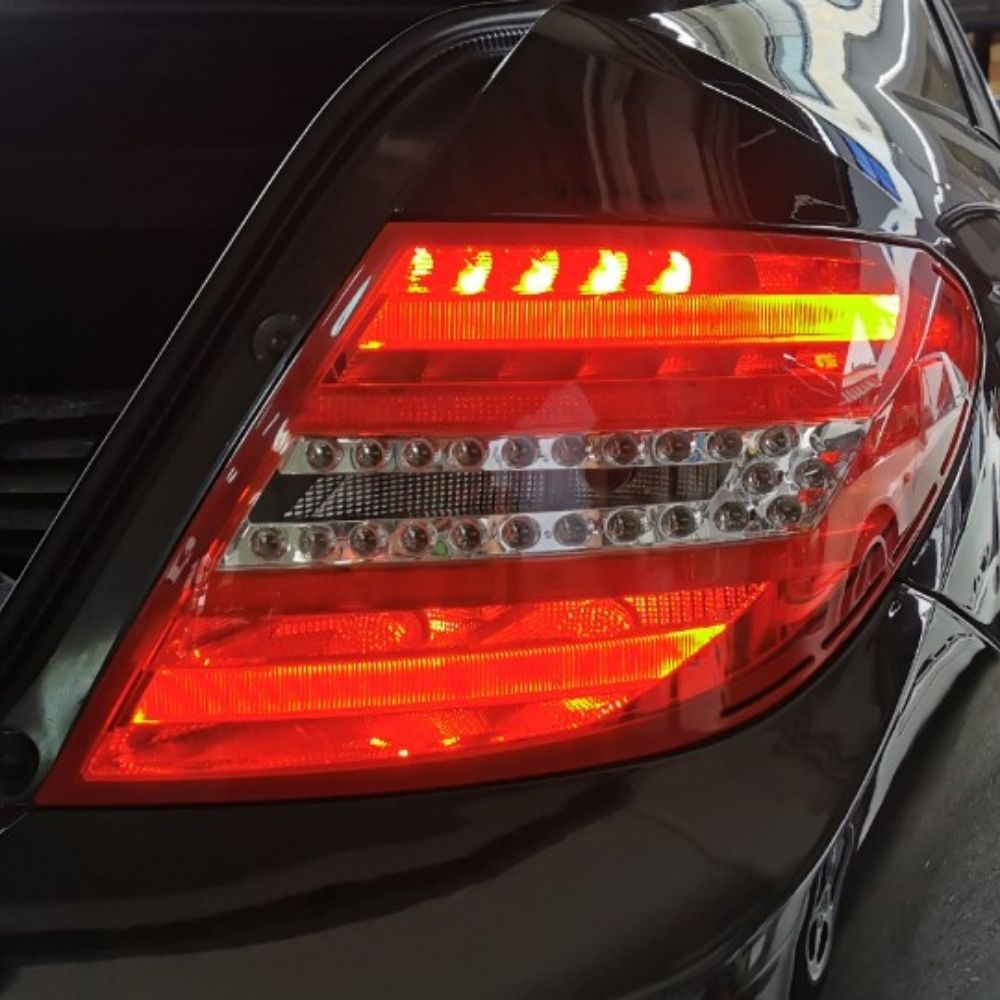
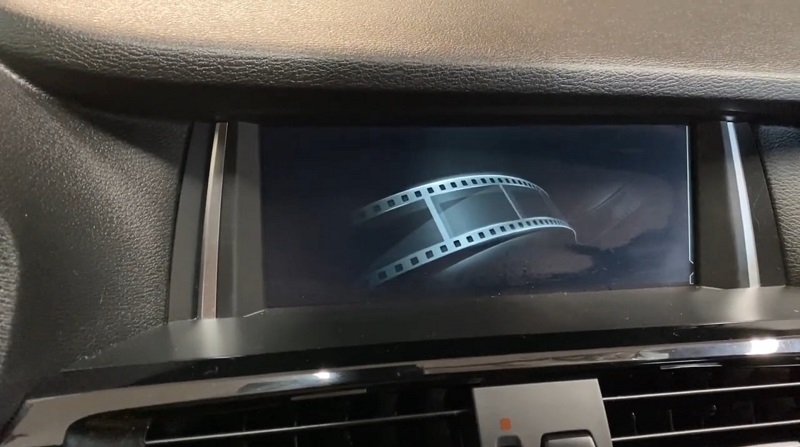

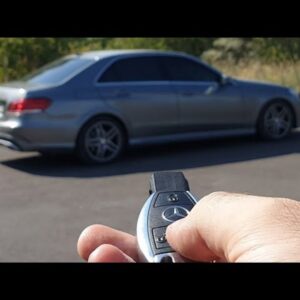
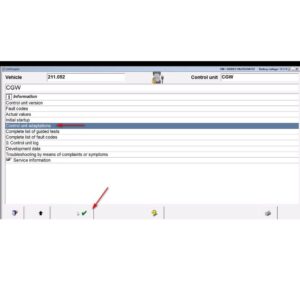
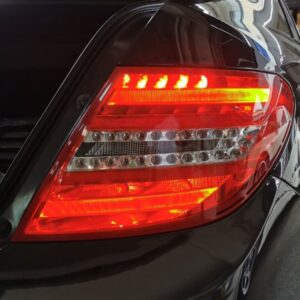
At AutoExplain, we provide automotive online repair service, auto repair tips, car repair manuals & document & training course to help mechanics of all experience levels—fix vehicles efficiently
AUTO EXPLAIN LLC
Employer Identification Number (EIN):
38-4349958
Whatsapp Us: +1(936)2896695
Gmail: [email protected]
Our Workshop: 1500 N Grant ST Sten Denver, Colorado, United States
Copyright 2025 © AutoExplain